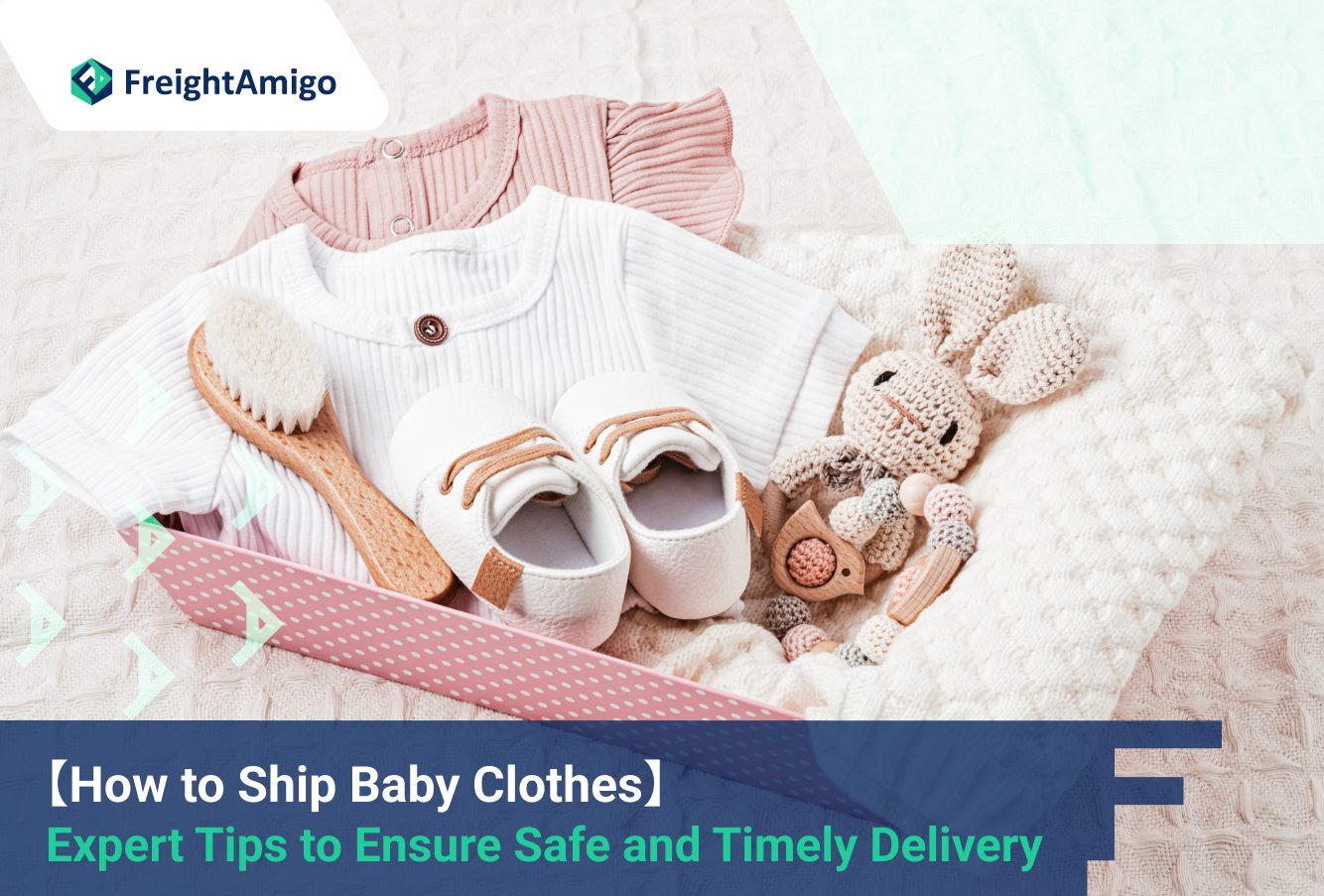When it comes to shipping baby clothes, safety and timeliness are of utmost importance. Parents and caregivers rely on receiving these essential items in a timely manner to ensure that their little ones are comfortable and well-dressed. Whether you are a small business owner shipping baby clothes or an individual sending a gift to a loved one, understanding how to navigate the challenges of shipping these delicate items is crucial. In this article, FreightAmigo will provide you with expert tips to ensure that your shipments of baby clothes arrive safely and on time.
Latest update on 19 February, 2024 by Aiden Ng– Marketing Analyst at FreightAmigo
Want to compare the best Express, Air Freight, Sea Freight, Rail Freight & Trucking rates so as to have better control on cost?
Understanding the Unique Challenges of Shipping Baby Clothes
Shipping baby clothes comes with its own set of challenges. These garments are often small and delicate, requiring extra care to avoid damage during transit. Additionally, baby clothes are typically made of soft fabrics that can easily wrinkle. This means that proper packaging and handling techniques are essential to maintain the quality and appearance of the clothes. Moreover, since baby clothes are in high demand, especially during certain seasons or when a new fashion trend emerges, timely delivery is crucial to meet the expectations and needs of customers.
Essential Packaging Materials for Shipping Baby Clothes
To ensure the safe delivery of baby clothes, it is important to use the right packaging materials. Start by selecting sturdy, corrugated cardboard boxes that are appropriate in size for the items being shipped. This will provide the necessary protection against external factors that could potentially damage the clothes. Additionally, consider using tissue paper or acid-free packing paper to wrap each garment individually. This will help prevent any potential color bleeding or transfer. Bubble wrap can also be used to provide extra cushioning and protection during transit. Finally, secure the package with packing tape, making sure all seams and openings are properly sealed to prevent any accidental openings.
Properly Packing and Labeling Baby Clothes for Shipping
When it comes to packing baby clothes for shipping, organization is key. Start by folding the clothes neatly and placing them in a clear, resealable plastic bag. This will keep the clothes protected from moisture and other external elements. It will also allow the recipient to easily see the contents of the package without having to open it. Next, place the bagged clothes in the cardboard box, making sure to leave enough space for cushioning materials. Fill any gaps with additional tissue paper or bubble wrap to prevent the clothes from shifting during transit. Lastly, seal the box and affix the shipping label securely. Clearly write the recipient’s address and contact information, as well as your own, to ensure accurate delivery.
Tips for Tracking and Insuring Shipments of Baby Clothes
To give yourself peace of mind and ensure the safe and timely delivery of baby clothes, consider utilizing tracking and insurance services. Many shipping carriers offer online tracking options, allowing you to monitor the progress of your package from pick-up to delivery. This will enable you to stay informed and provide updates to the recipient if needed. Additionally, consider insuring your shipment, especially if the contents are valuable or irreplaceable. Insurance provides financial protection in the event that the package is lost, damaged, or stolen during transit. While it may involve an additional cost, it is a worthwhile investment to safeguard your shipment of baby clothes.
Common Shipping Mistakes to Avoid When Shipping Baby Clothes
When shipping baby clothes, it is important to avoid common mistakes that can lead to delays or damage. One common mistake is using insufficient packaging materials. Ensure that you have enough cushioning and protection to prevent items from shifting or getting damaged during transit. Another mistake is failing to properly label the package. Be sure to affix the shipping label securely and clearly write the recipient’s address and contact information. Additionally, avoid procrastinating when it comes to shipping. Timely delivery is crucial, so plan ahead and allow for enough time to prepare and ship the package.
Tips for handling returns and exchanges of shipped baby toys
In the event that a customer needs to return or exchange a shipped baby toy, it is important to have a clear and customer-friendly policy in place. Make sure to communicate this policy to your customers before they make a purchase. Provide clear instructions on how to initiate a return or exchange and specify any conditions or fees that may apply. When receiving returned toys, thoroughly inspect them for any damage or missing parts before issuing a refund or replacement. By handling returns and exchanges efficiently, you can maintain customer satisfaction and uphold your reputation.
Conclusion: Ensuring Safe and Timely Delivery of Baby Clothes
Shipping baby clothes doesn’t have to be a daunting task. By understanding the unique challenges and following expert tips, you can ensure the safe and timely delivery of these precious items. Remember to use appropriate packaging materials, properly pack and label the clothes, utilize tracking and insurance services, and avoid common shipping mistakes. With these strategies in place, you can confidently ship baby clothes, whether you are a business owner or an individual sending a gift. By prioritizing safety and timeliness, you can bring joy to parents and caregivers while ensuring that little ones are dressed in style.
There are different options for cargo transportation. If you want to choose the most convenient and suitable solution, it is best to have the full support of logistics experts! If you are planning to ship baby toys overseas, please go to the FreightAmigo page for inquiries.
If you have any inquiries on logistics/supply chain, feel free to contact FreightAmigo now:
Chat with us online | Hotline: +852 28121686 | WhatsApp: +852 27467829









































